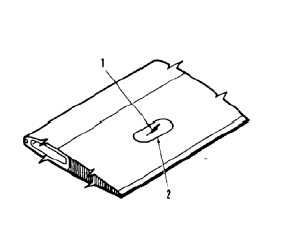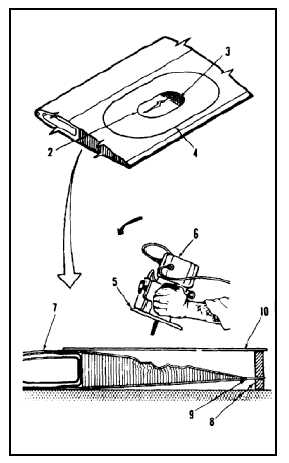TM 55-1520-240-23-4
5-69
REPAIR BLADE FAIRING — PARTIAL DEPTH
(Continued)
5-69
2.
Outline damage area (1). Mark circle or oblong
outline (2). Damaged removal area shall have
no corners.
Do not wash contaminants into
damaged area if acetone (E20) is
used to soften finish. Contaminants
can prevent satisfactory repair.
3.
Remove finish 1-1/2 inches outside of outline (2)
around damage. Use sanding block and abrasive
paper (E6). Use acetone (E20) if needed to
soften finish. Complete finish removal. Use
abrasive paper (E7). Do not sand through wire
mesh. Use gloves (E186).
4.
If wire mesh diverter (3) must be replaced,
expose wire mesh 1-1/2 inches outside of
damage area (1).
5.
Draw line (4) around outline (2) spaced at
distance equal to radius of router base (5)
away from outline. Use pencil compass and
straightedge. If damaged area (1) will not support
compass point, cover area. Use template paper
(E263) and masking tape (E388).
6.
Use router (6) to remove damaged skin, proceed
as follows:
a.
Position blade (7) on table. Clamp 1 inch
square wood strip (8) under trailing edge (9).
NOTE
Support at trailing edge puts
honeycomb core cells 90º to table
surface.
b.
Make a support platform (10) on blade (7)
to support router base (5) parallel to table
surface.
Router bit must not extend more than
3/4 inch. It must not cut deep enough
to damage opposite skin. If opposite
skin is damaged, a double skin repair
must be done (Task 5-70).
5-370



